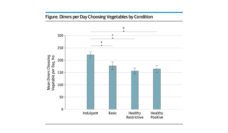Over half of all infants in the United States receive subsidized food from the Supplemental Nutrition Program for Women, Infants, and Children (WIC). The WIC program provides benefits that can be used to purchase a food package–a list of approved food items that meet the nutritional needs of the more than 15 million low-income children, pregnant, and postpartum women who participate in the program.
These food packages saw only marginal changes in the first three decades after WIC was established in the early 1970s, despite dramatic increases in childhood obesity and considerable advances in nutritional science. In 2009, however, a federal rule implemented unprecedented revisions: new packages halved juice allowances, replaced subsidies for refined grains with expanded access to whole-grain items, and increased allowances for fruits and vegetables, among other changes recommended by the Institutes of Medicine.
Did the WIC package changes translate into improvements in population health? To find out, my colleagues and I examined the trends in state-level obesity prevalence for two-to-four year old WIC participants before and after the package change. Before 2009, obesity rates increased every year, on average. After the package change, rates decreased each year. Our work offers evidence that the food package change was associated with a reversal of the increasing trend in obesity prevalence among WIC-participating children.
For children who participate in WIC, healthier food packages offer a first step to a healthier life.
Our study included data until 2014. From 2015 to 2016, other researchers observed a sharp increase in obesity rates for all two-to-five year old children in the United States. But recent evidence from the Centers for Disease Control and Prevention shows that decreasing obesity rates for WIC-participating children persisted from 2010 to 2016. This suggests that WIC participants may have been insulated from the increases in obesity rates observed among young children more generally.
Our analysis cannot rule out the possibility that some other factor in the same year contributed to the changing trend. However, our paper contributes to growing evidence supporting the role of the WIC package revision in reducing obesity among WIC-participating children. Researchers from the University of North Carolina at Chapel Hill, for example, found that WIC-participating shoppers purchased more fruits and vegetables, and consumed fewer calories, less total fat, and less sugar after the package revisions compared to nonparticipating households. Another study of children in Los Angeles County observed a decrease in obesity risk for children who received the revised food package. And a systematic review of papers evaluating the effects of the WIC package changes found consistent evidence of increased availability of healthy foods in outlets where WIC benefits could be used in addition to improved dietary intake.
Childhood obesity imposes a social and emotional burden as well as a physical toll, and children with obesity are at increased risk of adult obesity. For children who participate in WIC, healthier food packages offer a first step to a healthier life.
Photo by Nikolai Chernichenko on Unsplash














